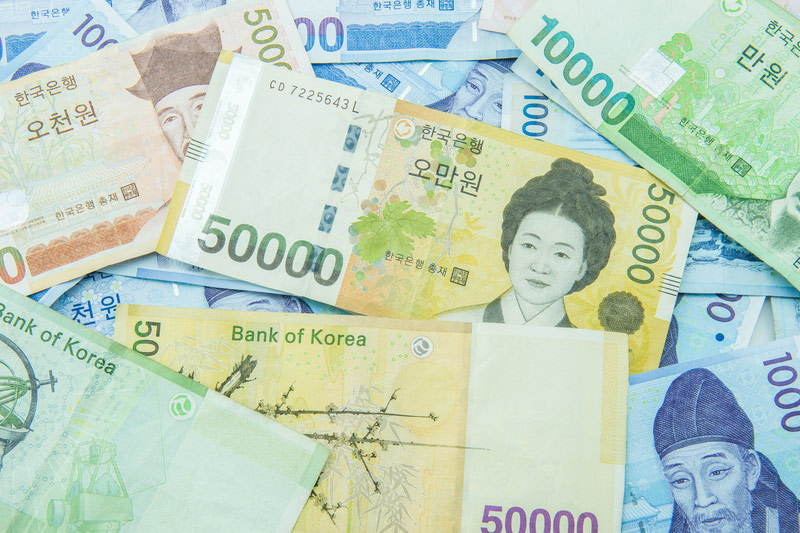Most Asian currencies drifted lower on Monday with the South Korean won leading losses amid an intensified political crisis in the country, while the U.S. dollar was largely steady ahead of a key inflation report due this week.
Investors’ appetite for riskier assets was also eroded by geopolitical tensions in the Middle East, after rebel forces in Syria ousted President Bashar al-Assad and took control of Damascus.
Media reports said al-Assad and his family landed in Moscow, and have been granted asylum, while Israeli forces had entered Syria.
S. Korean won remains near 2-yr low
The South Korean won’s USD/KRW pair climbed nearly 1% on Monday, hovering near its two-year high mark. The currency had depreciated more than 2% against the U.S. dollar last week.
The won is the worst performing currency in the region, having fallen nearly 10% in 2024 so far.
South Korea’s political crisis intensified after prosecutors launched a criminal investigation into President Yoon Suk Yeol on Sunday, over his failed attempt to impose martial law in the country last week. Yoon survived an impeachment vote in the opposition-controlled parliament on Saturday, but the head of his own party said that Yoon would be sidelined before eventually resigning.
Asian currencies, which were already subdued due to a strengthening dollar and fears of a U.S.-China trade war under incoming U.S. President Donald Trump, have been further pressured by the political instability in South Korea. The country is seen as a pillar of the East Asian economy.
3rd party Ad. Not an offer or recommendation by Investing.com. See disclosure here or remove ads.
The Taiwan dollar’s USD/TWD pair rose 0.3%, while the Singapore dollar’s USD/SGD pair inched 0.1% higher.
The Australian dollar’s AUD/USD pair was largely unchanged before a Reserve Bank rate decision on Tuesday. The RBA is expected to keep rates unchanged but may temper its hawkish stance amid signs of weakening economic conditions in Australia.
The Indian rupee’s USD/INR pair ticked up 0.1% after the Reserve Bank of India cut a key bank reserve ratio on Friday to boost liquidity amid signs of a cooling Indian economy.
Japan GDP, China CPI in focus
The Japanese yen’s USD/JPY pair was largely unchanged as investors remain divided on whether the Bank of Japan (BOJ) will hike rates next week, after Monday’s economic growth reading.
Revised gross domestic product (GDP) data showed that Japanese economy grew slightly more than expected in the third quarter. However, the reading was well below prior quarter’s rise.
The Chinese yuan’s onshore USD/CNY pair rose 0.3%, after data showed that Chinese consumer inflation contracted more than anticipated in November, despite recent stimulus efforts. Producer price inflation in November also remained subdued.
Focus this week will be on China’s annual Central Economic Work Conference (CEWC) for cues on more stimulus measures from the country’s central bank.
Dollar steady ahead of US inflation, Fed expected to cut rates next week
The US Dollar Index inched 0.1% higher, while US Dollar Index Futures were also rose slightly in Asia hours.
U.S. consumer price index inflation data for November is due on Wednesday, and could provide insights on Federal Reserve’s interest rate trajectory.
3rd party Ad. Not an offer or recommendation by Investing.com. See disclosure here or remove ads.
Markets are expecting a 25 basis points cut by the Fed next week, even after data on Friday showed that nonfarm payrolls grew more than expected in November.



